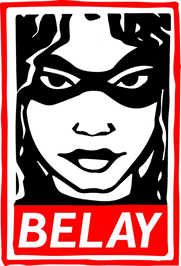
IPFS
A Rare Buy Signal Just Triggered on This Under-$5 Stock
Written by Sierra Hancock Subject: Economy - Economics USA
A Rare Buy Signal Just Triggered on This Under-$5 Stock

My strategy is nearly foolproof. The setup is easy to spot.
Almost every time it happens, shareholders see a huge short-term pop in
the stock price.
I'm talking about one of my favorite strategies for buying large-cap banks.
As I said last month, this type of setup is rare. In fact, I only
remember it happening twice in 2010. Both times, the two large-cap banks
jumped more than 30% inside a few months.
I'm seeing the same setup today. Before I get to that, though, let me explain how it works...
The setup I'm talking about has to do with a bank's tangible book value.
Tangible assets are cash, inventory, buildings... anything that can be
touched. Tangible book value does not include "goodwill" and other
assets that are hard to value.
To put it another way, tangible book value is what shareholders can
expect to receive if a company goes bankrupt and sells all its assets.
Once a large-cap bank's stock price falls below its tangible book value, shares almost always skyrocket higher.
The last time this setup happened was two months ago. Bank of
America's tangible book value was $11.10. Once the share price dipped
below that, the stock jumped more than 30% in less than two months.

Today, we have an opportunity to make 30% on another large-cap bank. It's trading right at its tangible book value.
On Tuesday, Citigroup reported earnings that fell short of
analysts' estimates. Wall Street was expecting earnings of eight cents a
share. The company reported earnings of four cents. The shortfall was
due to a $2 billion decline in trading revenue.
The decline in trading revenue is a one-time event. It
does not indicate business is bad at Citigroup. Overall, banking trends
remain favorable. Credit-card delinquencies continue to decline. Plus,
tangible book value increased from $4.10 a share last quarter to $4.50.
But shares of Citigroup sold off following the weak quarterly
results. Its stock is trading at $4.70. The last time Citigroup traded
this close to its tangible book value was August 10. My Penny Stock Specialist subscribers remember that date well...
We used the opportunity to buy Citigroup under $4 a share. The stock jumped 25% in less than six months.
The perfect setup would be for Citigroup to fall below its tangible book value of $4.50. But I suggest buying it right now.
Over the past two years, tangible book value has acted as a floor
of value for large-cap bank stocks. In other words, with the stock
within 5% of its tangible book value, I see little downside risk in
buying Citigroup...
As for the upside, Citigroup could go as high as $6 a share in 2011. We've got a safe shot at a quick 27% gain.
Almost every banking trend for Citigroup gets better with each
passing quarter. The government is about to sell its remaining stake in
the company. That means Citigroup could reinstate its dividend. It also
means institutional ownership could increase from 60% to the industry
average of 74%.
Like I said, it's rare to see a large-cap bank trade below its
tangible book value. I'd use the opportunity to buy Citigroup before
shares run higher.
Good investing,
Frank Curzio
Editor's note: In just three years of writing Penny Stock Specialist,
Frank has compiled one of the best track records in the industry, with
over 90% of his picks turning a profit, including four stocks that
gained over 125%. His current Penny Specialist portfolio is composed on nine double-digit winners. Click here for more information.
Further Reading:
"Tangible book value is one of the best tools I use
to analyze banks," Frank said in his original write-up last month. "If
you keep this number in mind, it's easy to trade bank stocks for a
quick, one-month, 20% gain... You can double, triple, even quadruple
your money in two years or less." Read Frank's original write-up here: How to Trade America's Most Hated Stocks.
Its shares are priced to perfection. Sixteen out of 17 analysts list it as a "buy." Reuters, Nightly Business Report, and Zachs all love it. But Frank suggests you take profits now. See what company he's talking about here: It's Time to Take Profits on One of Wall Street's Favorite Stocks.



























